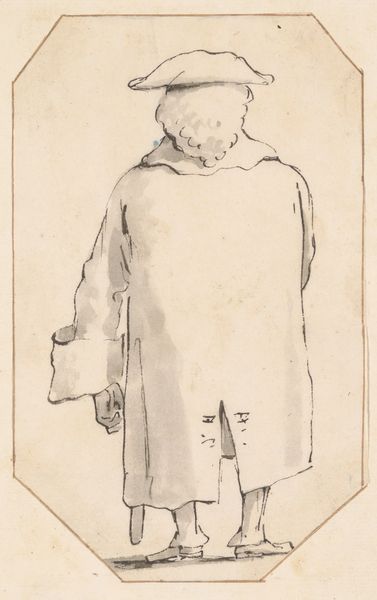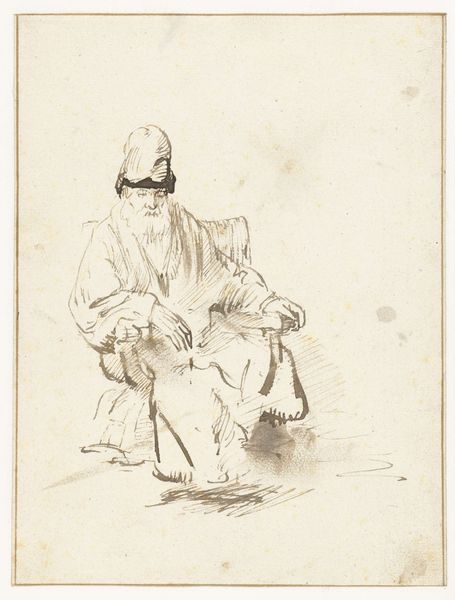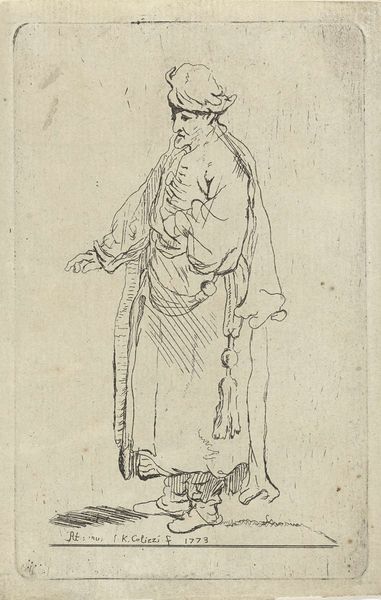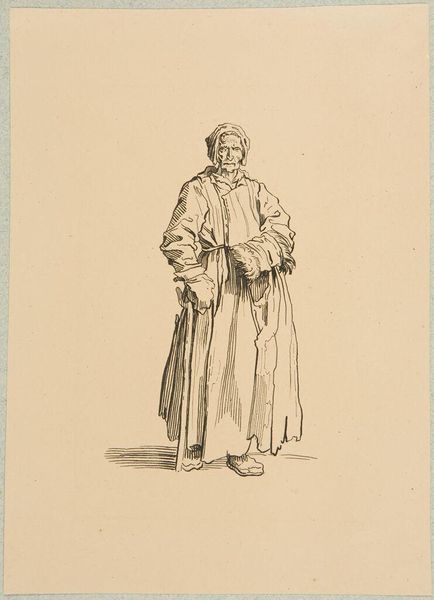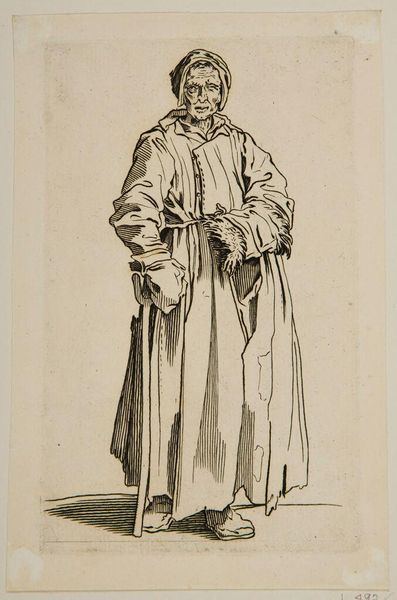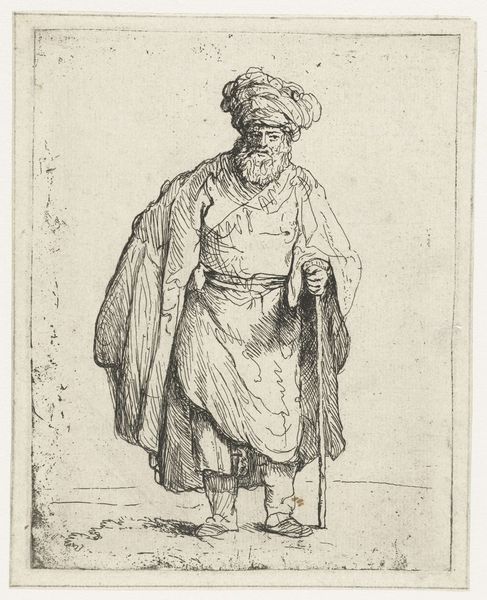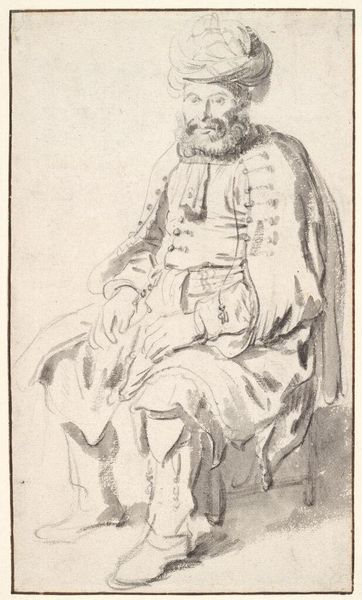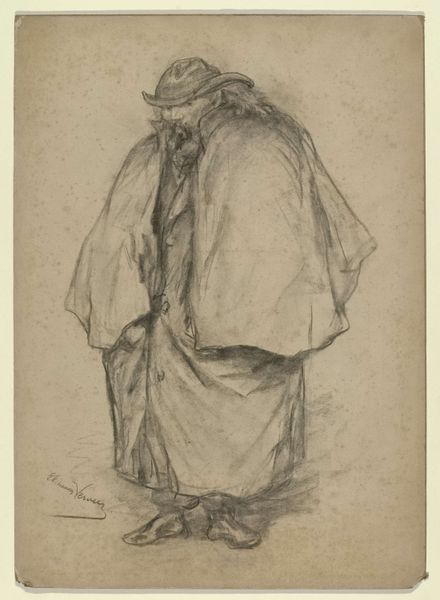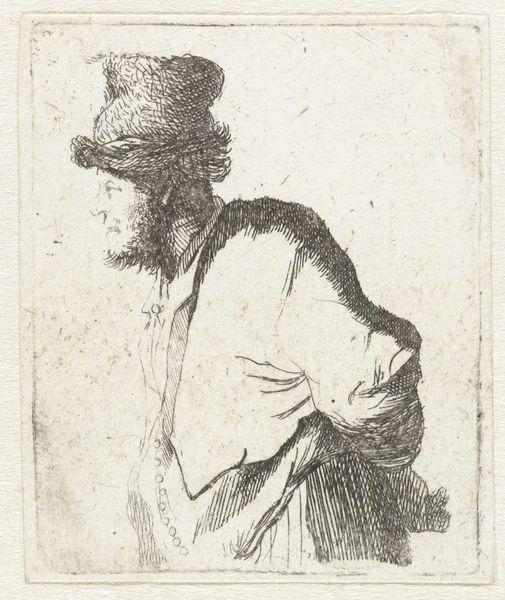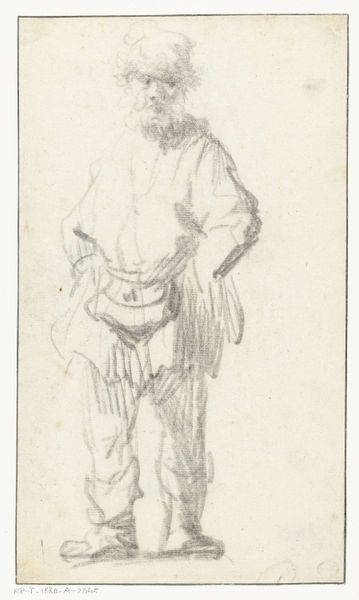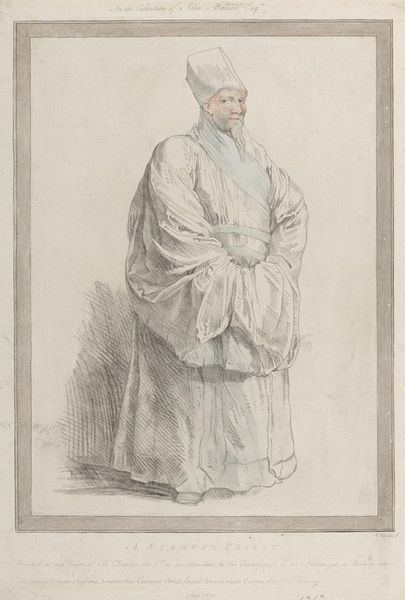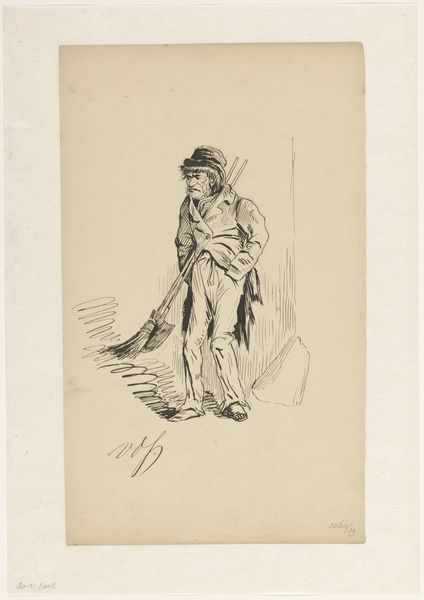
drawing
#
portrait
#
drawing
#
baroque
#
caricature
#
caricature
#
italian-renaissance
Dimensions: overall: 22.1 x 14.7 cm (8 11/16 x 5 13/16 in.)
Copyright: National Gallery of Art: CC0 1.0
Editor: So, here we have "A Standing Oriental Wearing a Greatcoat" by Giovanni Battista Tiepolo, created sometime between 1753 and 1762. It's a drawing, and what strikes me most is the almost comical rendering of the figure; there's a real sense of playful caricature. How do you interpret this work? Curator: Well, the term "Oriental" immediately raises a red flag. Tiepolo was working in a time of burgeoning European colonialism and, alongside that, a rise in the exoticization of non-European cultures. What we might see as playful caricature today could also be read as a depiction laden with the biases and power dynamics inherent in that historical moment. Does the portrayal of the figure feel celebratory or subtly mocking, especially when considered through the lens of cultural representation? Editor: That's a good point; it does feel problematic when you frame it that way. I hadn’t thought about it beyond the humour. So the "greatcoat" then, is that part of the 'orientalism', an inaccurate western lens? Curator: Exactly. The greatcoat is distinctly European. This blending – or, arguably, conflation – of cultures through dress points to a potential misrepresentation, reflecting European perceptions, which is quite different than true understanding. Can you think about why Tiepolo made this work? What social narratives might it be reinforcing, or perhaps subtly critiquing, even unconsciously? Editor: Maybe it reflects the growing curiosity about other cultures but filtered through a very Eurocentric view? Perhaps poking fun at both cultures simultaneously? Curator: Precisely. This piece gives us an opportunity to really examine not only the artist's intentions, which are always slippery, but also the broader cultural attitudes towards the 'Other' during the Enlightenment. It's a great example of how art can inadvertently reflect, and even perpetuate, problematic power dynamics. Editor: I’ll definitely look at art like this with a more critical eye from now on and ask myself how different cultures or people might be portrayed.
Comments
No comments
Be the first to comment and join the conversation on the ultimate creative platform.

